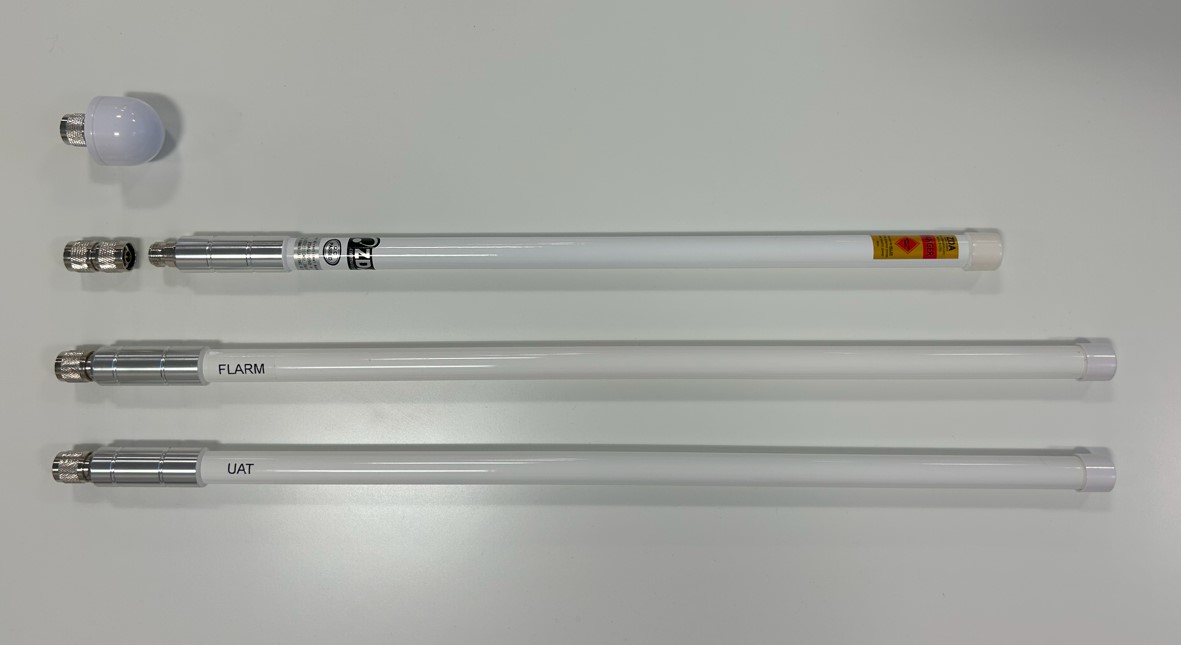Unboxing the G-1090 Receiver
We sincerely thank you for your purchase of the G-1090 air traffic receiver.
Enclosed within the package, you will find:
- One G-1090 air traffic receiver unit
- Essential components and screws for secure pole mounting
- A 1090 MHz antenna accompanied by a male-to-male N-type connector
- A GNSS antenna for precise global navigation
- A waterproof RJ45 Ethernet socket cover to ensure durability


When selecting a G-1090 receiver with the FLARM option, a corresponding FLARM antenna (868 MHz) will be included.
If the G-1090 receiver is equipped with the UAT option, a UAT antenna (978 MHz) will also be part of the package.
The accompanying image displays the GPS unit along with three other antennas for comparison in length: the 1090 MHz antenna (second, shorter, featuring a female N connector), the FLARM antenna (third, longer, with a male N connector), and the UAT antenna (fourth, longer, also with a male connector). Ensure that the antennas for FLARM and UAT are labeled appropriately with "FLARM" or "UAT" stickers.

Important considerations:
- To visualize air traffic, you must have access to INVOLI.live.
- Alternatively, you can use INVOLI APIs to fetch messages from our server and present them in any interface you prefer.
- The performance of the G-1090 Air traffic receiver is greatly affected by the quality of its installation. Please adhere to our recommendations to enhance the coverage of your receiver, the network of receivers, and the effectiveness of Multilateration.
- If you are using an LTE PoE router, make sure to check your carrier's coverage in the area where you plan to deploy the G-1090 Air traffic receiver.
- Detection of Mode S and Mode A/C aircraft is only feasible through multilateration.
- For effective Multilateration, the aircraft's signal must be captured by at least five G-1090 Air traffic receivers. The configuration of these receivers and their relative positions to the aircraft will impact the accuracy of the multilateration.
|
Attention - Aircraft equipped with ADS-B and FLARM systems continuously broadcast their location approximately every second. In contrast, Mode S and Mode A/C aircraft only transmit signals when they are interrogated by a Secondary Radar (1030 MHz interrogations) or a TCAS. Therefore, these aircraft can only be detected in areas where 1030 MHz radar interrogations are present.
- Aircraft without a transponder (non-cooperative air traffic), those with their transponder turned off, or those operating on military modes will not be detected by the G-1090 air traffic receiver.
|


